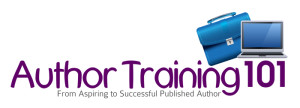 Today, you can choose from a variety of ways to publish your nonfiction book. You can produce a print book or an ebook. You can seek a traditional publisher or self-publish. And you can take a hybrid approach to your career, doing a little indie publishing and a little traditional publishing.
Today, you can choose from a variety of ways to publish your nonfiction book. You can produce a print book or an ebook. You can seek a traditional publisher or self-publish. And you can take a hybrid approach to your career, doing a little indie publishing and a little traditional publishing.
Why You Need a Business Plan
No matter how you plan to publish your nonfiction book, producing a business plan for a book will help you succeed. A business plan helps you determine if your idea is viable or how to make it viable. This one document can tell you if your nonfiction book idea is marketable or not. If your plan doesn’t convincingly show that your book idea will sell in the market you plan to target, you don’t want to spend time or money to write and publish it (at least not if you want to make any money). The reason for this is simple: It doesn’t make good business sense to invest anything in a project that won’t sell—to a publisher or to readers.
If you attempt to traditionally publish, publishers will use your business plan to evaluate if your project has a high likelihood of producing a return on investment. If the plan doesn’t show such proof, they won’t offer to invest in it. If it does, they will offer you a publishing contract. If you want to land a traditional publishing deal, it’s important, therefore, to understand the essential elements of a nonfiction book’s business plan and why each one is required.
As I explained in my last post, no matter how you choose to publish, a business plan for a book tends to follow the format of a book proposal. If you want to convince a traditional publisher to invest in your nonfiction book, however, you need to produce an actual book proposal that meets industry standards. That means you must follow the basic “formula” or “template” of a standard nonfiction book proposal. If you self-publish, your business plan can vary from the standard document.
Traditional Book Business Plan Essentials and Why They are Necessary
In all cases, you should understand both the information necessary to complete each section, but, more important, the importance of each section. This will help you produce a business plan for a truly marketable book and prove that you are a good business partner for a publisher. The following constitute the standard sections of a traditional book publisher’s business plan, or a book proposal, and why they are both essential and necessary.
An Overview—a compelling summary of the book and its benefits
This section is basically a sales pitch to convince an agent or an acquisitions editor that your idea is unique in its category, has a market that needs or wants it, and will provide value. You need this section in your plan because publishing professionals must be able to tell from reading just these one or two pages if your proposed book interests them and has sales potential. If you can’t “make the sale” to them in the Overview, they won’t read any farther—and you won’t make this initial sale.
Market Analysis—an argument for the potential audience size
Publishers want to know if a book will sell enough copies to “earn back” not only the advance on sales paid to the author but the total expenses incurred to produce the book—and then enough to actually make some money. After all, they stay in business by profiting on the books they bring to market. You need to include this section because, if you can convince an acquisitions editor that the market for your book is large, or, if small, has a true need for what you have to offer and is willing to spend money on it, he or she will take on your project. That’s why a strong overview that successfully argues for a book’s market is a must to sell a book to a publisher.
Competing Books—an evaluation of how your book differs and improves upon published titles and is necessary in the chosen category
You may think it’s a good thing if your nonfiction book is the only one of its kind, and in rare cases that can be true. In most cases, however, that means no market exists for books on your topic. You need to complete an analysis of other similar books in the category and include this section in your proposal to prove to a publisher that the bestselling books that represent competition sell well enough to make your idea viable. A publisher will examine your selections, possibly add additional titles, and determine if the sales meet the publishing houses’ criteria. If not, no deal for you.
Additionally, this analysis allows you to point out how your book will stand out from other top-selling titles in the category. If sales are good, the publisher will decide if your book appears unique and necessary enough to give the other books a run for their money. If so, you might land yourself a deal (if you proved your book had a viable market).
Spin-offs—a demonstration that you are a multiple-book author
When a publisher decides to invest in a book, he also invests in the author. Given that studies show an author who publishes more than one book, or rather multiple books, tends to sell more books over time, publishers prefer to work with writers who have many book ideas. These authors are good investments. Not every book proposal, or business plan, includes a Spin-offs section, but it should—or somewhere it should say that you plan to write a series or a follow-up book. This will give the publisher confidence that you aren’t just a one-book wonder.
Promotion Plan—a mini-plan that details how you will help sell your book upon release to your target market
Publishers seek authors willing to help sell their books—good business partners. That means you need to convince them you will help promote your book after it is published. You do this by creating a concrete and believable promotion plan for your book, which is based upon your pre-promotion efforts. If a publisher doesn’t believe you can help sell the book, or you aren’t willing to do so, you may not end up with a contract. That’s why this section of your traditional publishing business plan is so important.
Author Bio—your credentials
The biography you provide convinces a publisher that you, as a nonfiction author, are an expert on your subject. Your credibility, in general, helps convince readers to buy books as well. You must provide information that makes an acquisitions editor feel confident in you as both a writer and authority.
Author Platform Description—an illustration of the built-in audience you have created in your books’ target market
This section of a proposal or business plan has become ever more important for nonfiction authors. You need to include it to convince a publisher that you have visibility, reach, authority, and influence in your target market created in any number of ways, including social networking, speaking, writing for publication, and media appearances. The size or engagement level of your author platform proves to a publisher that you have pre-promoted your book, which indicates your willingness also to promote (help sell) your book upon release. The success of your promotion plan also relies on your platform.
Table of Contents—the structure of your book
This brief section simply shows the structure and content of your book. You need to create a snapshot of your whole book that is compelling, makes sense and appears comprehensive, so it entices an acquisitions editor (and later a reader) to delve deeper into your content. If you can do that, you increase your chances of being offered a traditional publishing contract.
Chapter Summaries—a chapter-by-chapter synopsis of your entire nonfiction book
This section allows you to elaborate on your nonfiction book’s content. This is a final chance to show how your book will be unique, necessary, provide benefit, target the market, and fill a hole on the bookstore shelf. It illustrates how you will flesh out the table of contents and carry out the details in the Overview.
You can find many books on how to write a book proposal. My new book, The Author Training Manual, explains how to write a business plan for your book and then hone it into a book proposal.
 The Author Training Manual: Develop Marketable Ideas, Craft Books That Sell, Become the Author Publishers Want, and Self-Publish Effectively, Nina Amir’s new book, provides all the information you need to create a business plan for your book and to train you to become a successful author. However, you also can get author training from Nina during the next Author Training 101 LIVE course. Starting May 6, you will receive audio and video lessons that correspond with the chapters. And, while you use take the course and complete the training exercises in the book, you get support during 8 weeks of group coaching. You’ll also get a bonus proposal/business plan template and more! Only 20 spots! Get more information and claim your spot by clicking here.
The Author Training Manual: Develop Marketable Ideas, Craft Books That Sell, Become the Author Publishers Want, and Self-Publish Effectively, Nina Amir’s new book, provides all the information you need to create a business plan for your book and to train you to become a successful author. However, you also can get author training from Nina during the next Author Training 101 LIVE course. Starting May 6, you will receive audio and video lessons that correspond with the chapters. And, while you use take the course and complete the training exercises in the book, you get support during 8 weeks of group coaching. You’ll also get a bonus proposal/business plan template and more! Only 20 spots! Get more information and claim your spot by clicking here.
Photo courtesy of adamr | freedigitalphotos.net